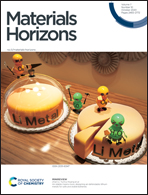Enhanced charge separation and photocatalytic hydrogen evolution in carbonized-polymer-dot-coupled lead halide perovskites†
Abstract
Metal halide perovskites are promising candidates as photocatalysts due to their uniquely outstanding photophysical properties; however, the catalytic efficiency is limited by severe charge recombination. Herein, we show that carbonized polymer dots (CPDs) can act as an efficient charge modulator to stabilize photo-generated carriers in methylamine lead triiodide (MAPbI3) perovskites through ultra-fast hole transfer, and thus increase the rate of visible light-driven photocatalytic HI splitting 35-fold. The optimized CPD/MAPbI3/Pt hybrid photocatalytic system exhibits an impressive H2 evolution rate of 11 497 μmol h−1 g−1, a solar-to-hydrogen conversion efficiency of 2.15%, and an apparent quantum yield of 53.6% at 420 nm, which are among the highest values for metal halide perovskite photocatalysts. Moreover, the presented strategy of hole extraction via CPDs can be universally applied to improve the performance of previous electron-manipulated MAPbI3-based photocatalytic systems. The easy-to-prepare and bandedge-tunable CPDs with excellent charge-transfer ability may bring new insights in developing high-performance perovskite photocatalysts.

- This article is part of the themed collection: Horizons Community Board Collection: Solar Energy Conversion


 Please wait while we load your content...
Please wait while we load your content...